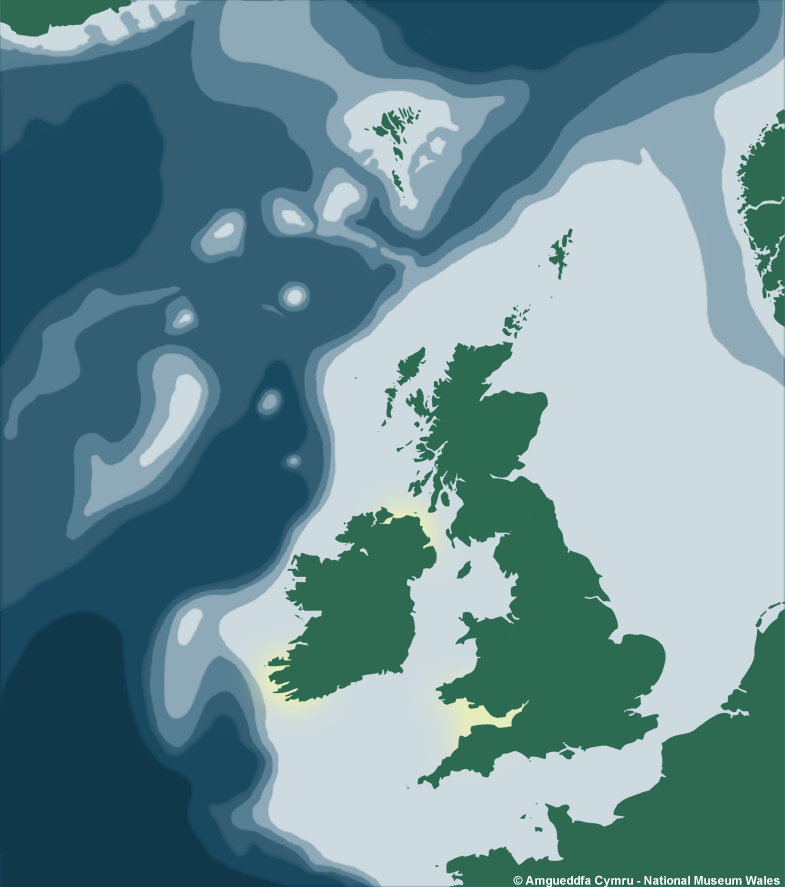Coracuta obliquata (Chaster, 1897)
Galeommatoidea : Montacutidae |
| Tebble name: | n/a |
| Smith & Heppell name: | Neolepton obliquatum (Chaster, 1897) |
To size: To 3mm. Shell Structure: Thin, fragile. Equivalve: Equivalve. Equilateral: Inequilateral, beaks in posterior 2/3rds of shell. Outline: Obliquely subovate, transversely teardrop in form. Dorsal anterior margin prominent, straight, gently sloping, slightly angled at junction with anterior margin. Lunule elongate, narrow, not sunken but defined by a weak ridge. Anterior margin rounded, ventral margin gently curved, posterior margin subtruncate, junctions with ventral and posterior dorsal margins weakly angulate, posterior dorsal margin short, straight to slightly convex, steeply angled.
Sculpture: Concentric fine sharp ridges irregularly undulating and occassionally dichotomizing. Margin: Smooth. Ligament: Large, internal on a shallow resilifer slightly posterior to beaks. Hinge: RV single anterior and posterior lateral teeth; anterior lateral almost 3 times the length of posterior, the lunule margin creates a shelf to form a socket; the posterior forms a v-shaped socket at its posterior end. LV without laterals but dorsal margins extended as marginal flanges that fit into RV sockets. A tubercle is present beneath and anterior of beak. Pallial Musculature: Pallial line entire. Periostracum: Pale brown. Colour: Cream to light brown, glossy. Additional Characters: Prodissoconch is smooth. Suggestion of Pd I at 79microns PdII is 344 microns.
Distribution & Ecology
Bristol Channel samples found in muddy sand with very small amounts of gravel and the Silver Pit samples found in muddy sand or sandy mud.
Depth Range
Continental Shelf (to 200m)

Additional Information & Related Species
Key Features & Similar Species
Related Species
Galeommatoidea : Montacutidae
References
Listed are literature citing Coracuta obliquata (Chaster, 1897). Reference containing the species Type Description is highlighted.
|
Chaster G W 1897. III. Notes on the marine Mollusca of Rathlin Island. The Irish Naturalist. 1897: 184-187. |
|
Holmes A. M., Gallichan J. S. & Wood A. H 2006. Coracuta obliquata n. gen. (Chaster, 1897) (Bivalvia: Montacutidae) - first British record for 100 years. Journal of Conchology. 39: 151. |
|
Kallonas M, Zenetos A & Gofas S 1999. Notes on the Ecology and Distribution of Microbivalvia in Greek Waters. La Conchiglia. 291: 11-20. |
|
Van Aartsen JJ 1996. Galeommatacea and Cyamiacea Part II. La Conchiglia. 281: 27-53, + 61. |
Resources
- Conchological Society
of Great Britain & Ireland
Provides resources for understanding, identifying, recording, and conserving molluscs - CLEMAM
Check List of European Marine Mollusca - MarLIN
The Marine Life Information Network for Britain and Ireland (MarLIN) provides information for marine environmental management, protection and education. It is a centre of excellence in spatially based and time-series marine biological information and supports good stewardship in the marine environment. - NBN Gateway
National Biodiversity Network's Gateway. Use it to explore UK biodiversity data, as contributed by participating data providers. - BivAToL
- MarBEF
- Malacological Society
- Unitas Malacologica
- Census of Marine Life
- MarBEF
MarBEF, a network of excellence funded by the European Union and consisting of 94 European marine institutes, is a platform to integrate and disseminate knowledge and expertise on marine biodiversity, with links to researchers, industry, stakeholders and the general public.











